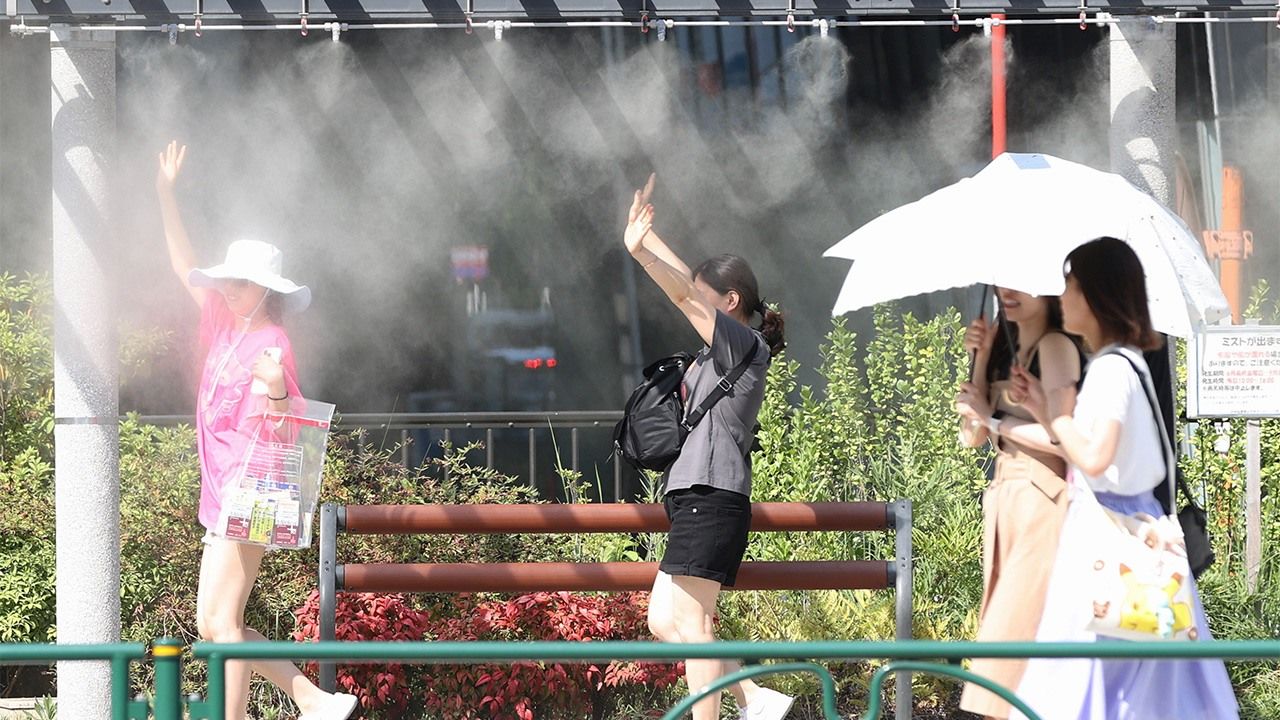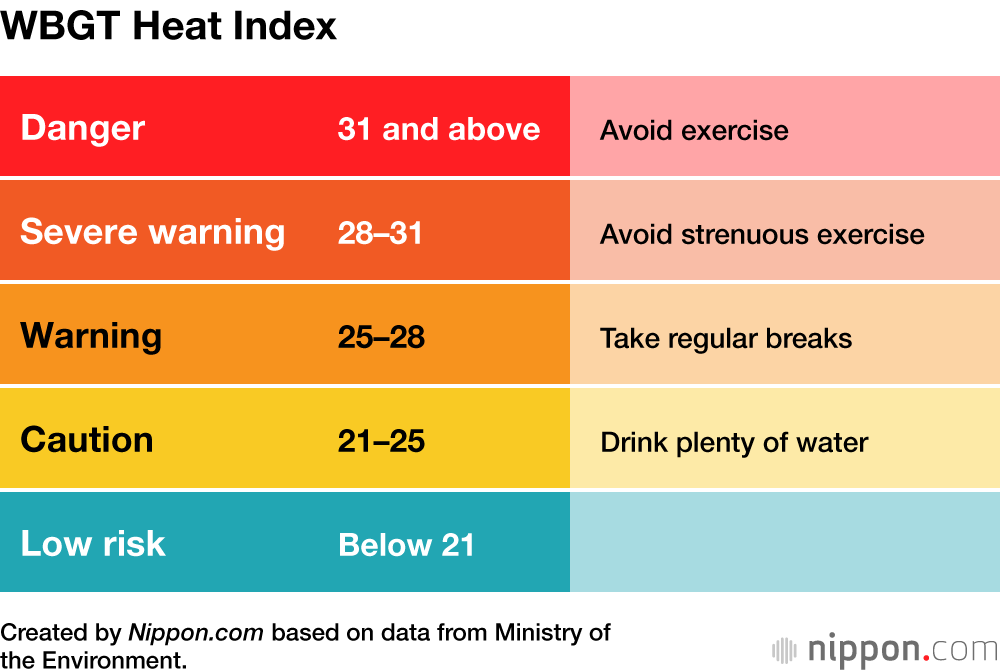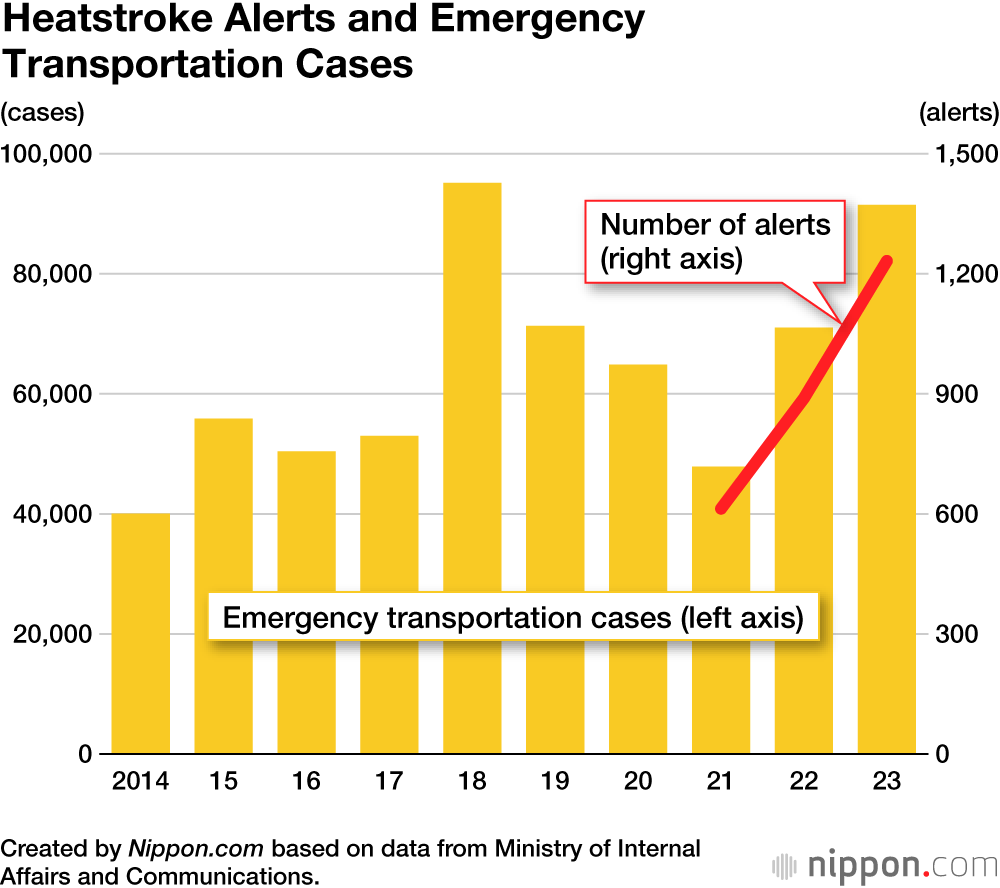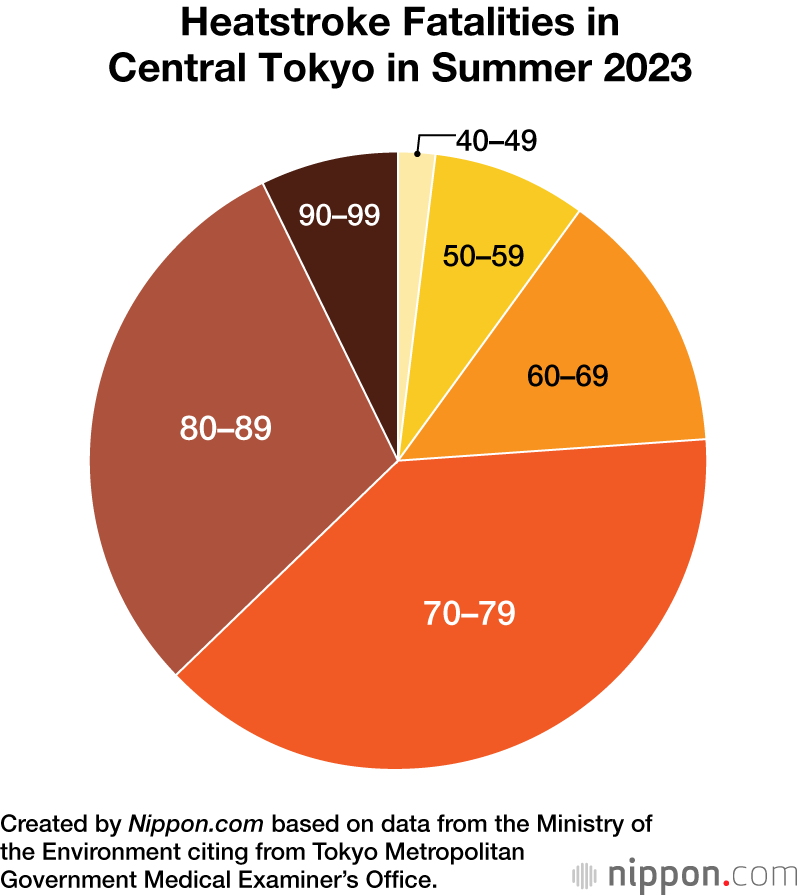
More than 1,000 Heatstroke Alerts Issued Across Japan in 2023
Society Environment- English
- 日本語
- 简体字
- 繁體字
- Français
- Español
- العربية
- Русский
Japan began its heatstroke alert system for summer 2024 on April 24; it will run until October 23.
According to the Japan Meteorological Agency, heatstroke alerts are issued in each of 58 forecast areas across Japan when the wet bulb globe temperature (WBGT) heat index is predicted to be 33 or above. Information about the alerts can be viewed on the Ministry of the Environment’s Heat Illness Prevention Information website and it is also possible to register with a mail subscription service to receive alerts as they occur.
WBGT is a heat index aimed at preventing heatstroke that is estimated using factors such as temperature, humidity, and intensity of solar radiation. In recent years, WBGT meters have also started being sold in the general market. When the index is 28 or above, the number of heatstroke cases rapidly increases.
A public heatstroke alert system began operating nationwide from fiscal 2021. The first year saw 613 alerts, but this number doubled to 1,232 in fiscal 2023, the third year of the system being in place.
Although the majority of the alerts in 2023 occurred in August followed by July, there were also 66 alerts in September, five in June, and one in May. Niigata and Nagasaki had the highest number of alerts during the year with 42 each. Tokyo had 26 alerts, Aichi 28, Osaka 19, and Kyoto 29.
From fiscal 2024, newly introduced special heatstroke alerts will be issued by the Ministry of the Environment for prefectures where the heat index is predicted to be 35 or over at all observation points the following day. While there have not been any cases of hot weather yet that would warrant such a special alert, if one is issued, the local authorities are required to open pre-prepared evacuation facilities that act as “cooling shelters.”
According to the JMA, the number of emergency transportation cases due to heatstroke that have occurred in recent years have been in an annual range of 40,000 to 90,000. With the exception of 2021, there were more than 1,000 annual deaths in the five years from 2018 to 2022.
The chart below shows the age range of the 164 heatstroke fatalities that occurred in central Tokyo’s 23 municipalities in summer 2023. The elderly accounted for the majority, with 76% being people aged 70 and over. Of the 148 people who died indoors, 64% of cases were because “they had air-conditioning but hadn’t used it” while 26% “didn’t have air conditioning.” For that 90%, not having air conditioning made their situation all the more severe.
(Translated from Japanese. Banner photo: People walk under a misting system in Chūō, Tokyo, during a heatwave on July 26, 2023. © Jiji)



